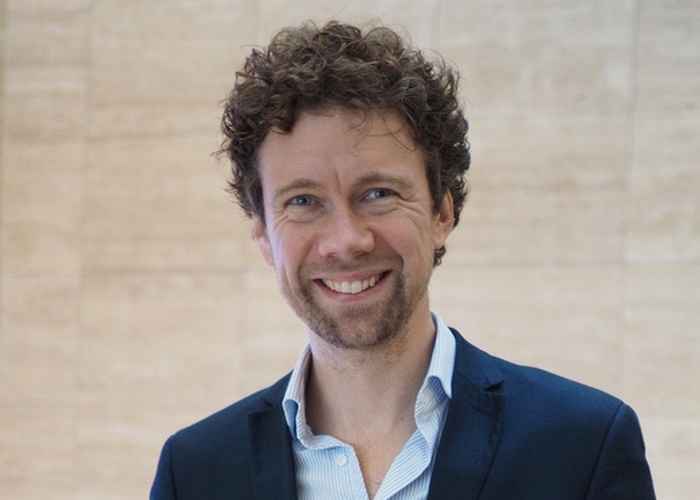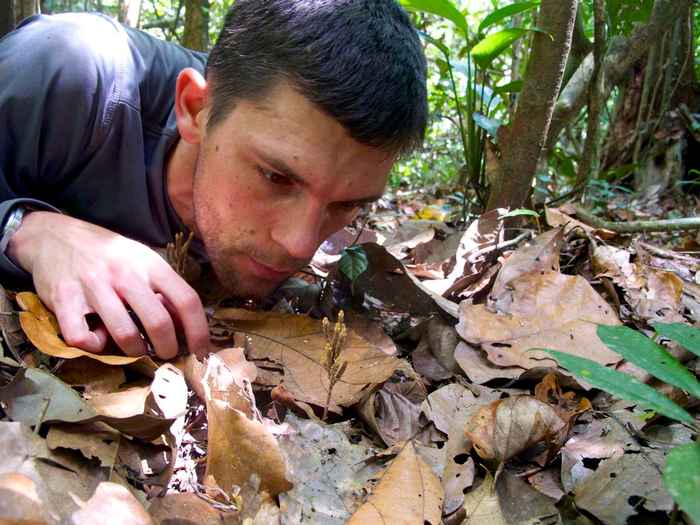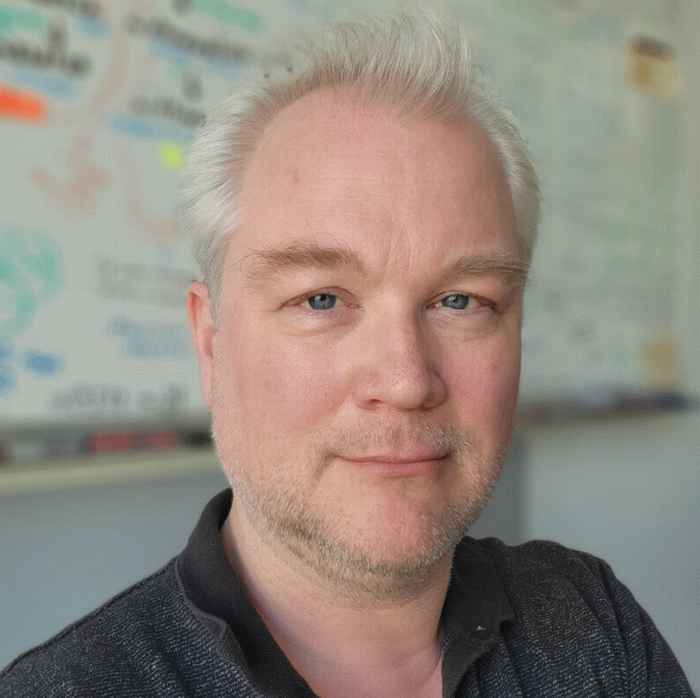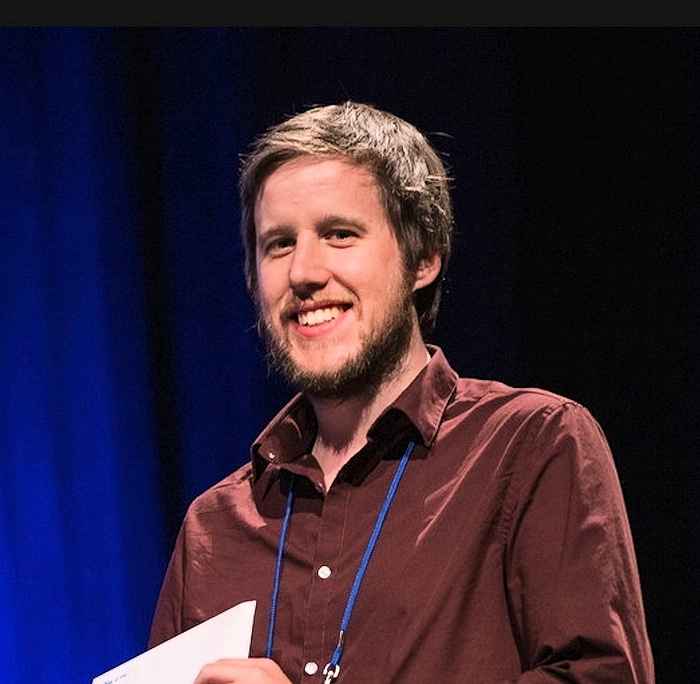Personal grants
Faculty of Science

FlowHAT: Site-selective C(sp3)–H functionalization with gaseous reagents using Hydrogen Atom Transfer photocatalysis in flow
An essential part of synthetic organic chemistry is the conversion of raw materials into highly complex molecules. While traditionally this has been achieved through conversion of functional groups, Nature has developed strategies to deliberately functionalize C–H bonds in organic molecules. Mimicking Nature’s machinery, chemists have developed a diverse set of powerful C–H bond functionalization strategies. However, the selective functionalization of C–H bonds such as present in saturated alkanes is still very challenging and remains a 'dream reaction' for organic chemists. Timothy Noël will pursue a novel approach that combines both chemical and technological tools and is based on a continuous-flow photocatalytic process of Hydrogen Atom Transfer (HAT) making use of a cheap and abundant catalyst.

CHIRAL: Crystals of single chirality via non-equilibrium routes
The molecular building blocks of life are of only one handedness. Consequently, pharmaceuticals and other bioactive molecules also need to be of one handedness. When such enantiomers crystallize in separate crystals, isolation of the desired handedness is relatively straightforward. Unfortunately, most enantiomers (90-95%) are thermodynamically more stable as racemic compounds with both enantiomers in the crystallographic unit cell, which impedes any such separations. There are currently no methods to systematically overcome this major bottleneck, thus hindering simple routes towards many essential enantiopure molecules. The CHIRAL proposal is aimed at overcoming this fundamental challenge by establishing new principles to turn racemic compounds into molecules of a desired handedness.

Mixotrophy: an uncharted carbon flux in the plant world
Plants use solar energy to grow: they use their green leaves to capture carbon from the atmosphere in a process called photosynthesis. But some plants that grow in the shade are able to tap into another source of carbon: underground networks of fungi. In this way, they can grow in spots that would otherwise be too dark to survive. This exchange is known for plants that use a group of fungi named the ectomycorrhiza. These plants form about two percent of all plant species, mostly trees from temperate climates. Merckx suspects that it also happens among plants that connect to a different group: the arbuscular mycorrhiza. And that's about 80% of all plants, also plants with green leaves. If that idea is correct, we need to change our ideas about how plants grow.
Marianna Girlando (Institute for Logic, Language and Computation)
Cyclic Derivations for Recursive Operators
Supervisor: Yde Venema
Beste Kamali (Institute for Logic, Language and Computation)
Explorations in Polar Question Meaning and its Variations
Supervisor: Floris Roelofsen
Ana-Maria Raclariu (Institute of Physics)
Towards a holographic approach for gravity in asymptotically flat spacetimes
Supervisor: Alejandra Castro Anich
Jesús San Jose Orduna (Van 't Hoff Institute for Molecular Sciences)
Selective Alkylation of Complex Molecules in Flow
Supervisor: Timothy Noël
Mikhail Hlushchanka (Korteweg-de Vries Institute for Mathematics)
Complexity in Dynamical systems, Algebra, and Geometry
Supervisor: Han Peters

Anticipating pest formation using smart resistance genes
Pest formation is elusive. In this project Kant will make pest formation in agriculture predictable. Using "co-evolution in a petri dish", Kant will first develop smart resistance genes and then map out the spectrum of adaptations with which the pest can break through these resistances. He wants to demonstrate empirically that such smart resistance genes can be used to anticipate and prevent pest formation on crops.

Making neural networks think through language
Deep learning is behind many of the advances in AI that we hear about and encounter every day, including voice assistants, machine translation, and computer programs beating humans in board games. However, to obtain such an automated system one needs to define a narrow task and collect large amounts of data. These systems fail when given a task even slightly different from the task they were trained to perform. Titov’s project investigates how to make the systems ‘think through language’, discovering generalisable human-like solutions.

Achieving animate properties with odd robotic matter
Can we create materials that can autonomously move and perform tasks even in unpredictable environments? Coulais’s project will introduce a novel type of robotic materials that are materials made of robots instead of atoms, and which will be capable of autonomously rolling, crawling and swimming in complex terrains.

E‑ciently simulating stochastic processes in curved spaces
Stochastic differential equations in curved spaces are key models in applications ranging from cell biology to image- and speech recognition. As the solution to such equations cannot be given explicitly, practitioners rely on various approximation methods. However, for many of these approximation methods it is unknown whether they converge to the true solution, and if so, how fast. Cox’s goal is to establish convergence (rates) for methods that are currently used in practice, as well as to develop new methods that are either more efficient or can be applied to a larger class of problems.

Unleashing the Potential of Separation Technology for Achieving Innovation in Research and Society (UPSTAIRS)
In UPSTAIRS, methods and open-access algorithms will be created, to facilitate the use of powerful contemporary separation technology for other (industrial) disciplines. By automating the selection and simultaneous optimisation of a large number of parameters, contemporary methods can be drastically improved. This will help society solve pressing problems and will help us better understand materials, art, pharmaceuticals, environment, and other matrices.
Inez Pastor-Marazuela (Astronomy)
Deciphering the origin of Fast Radio Bursts
Fast Radio Bursts are very bright and short extragalactic astrophysical transients. They are extremely energetic, and although most are only seen once, some repeat. Since their origin remains a mystery, Pastor-Marazuela's aim will be to determine how they are produced taking long, deep radio observations using the MeerKAT radio telescope. Pastor-Marazuela will go to the University of Manchester.
Tessel Bouwens (Chemistry)
Accessing medicines worldwide using solar light
The pharmaceutical industry currently uses damaging fossil fuel resources. Bouwens’ research proposes harnessing solar energy to synthesise important chemicals, such as building blocks for medicines by combining artificial photosynthesis with biocatalysts in bio-hybrid devices. Bouwens will go the University of Cambridge.
Eduard Bobylev (Chemistry)
Electric gel to produce fuels from renewable feedstock
A conversion of the greenhouse gas carbon dioxide to fuels will provide better energy security and is a step in impeding global climate change. The subject of Bobylev's interdisciplinary study is the development of novel gels which convert carbon dioxide to higher-value fuels using electricity. Bobylev will go to Massachusetts Institute of Technology.
Dr Emilia Olsson (Institute of Physics/ARCNL)
Olsson and her team will conduct atomic-scale modeling of solid-state materials to explore and design materials for EUV lithography. Directly probing the materials properties and mechanisms that lead to enhanced and limited performance is challenging. Therefore, the group will develop a computational framework to probe the effect of initial surface structure and deposition on interface formation. These models will allow degradation pathways to be explored at different interface systems, permitting for mitigation and optimisation. Olsson says: “the WISE Fellowship allows us to build an ambitious research project to develop an atomistic understanding of interfacial phenomena in current EUV lithography bottlenecks and future technologies.”